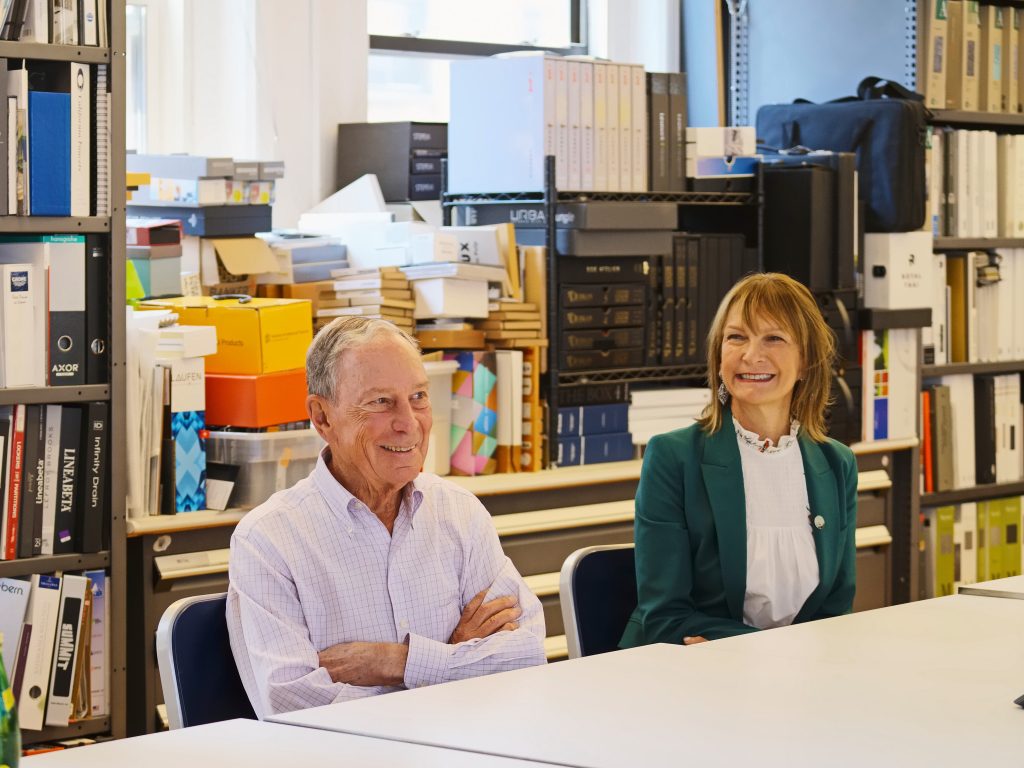
Our CEO Patti Harris recently asked LinkedIn followers to send her questions on how Bloomberg Philanthropies approaches tackling big challenges and fosters a culture of innovation in the philanthropic space.
She chose a few of the questions to answer, touching on topics like risk-taking in philanthropy, what Bloomberg Philanthropies’ priorities are for 2023, and describing how philanthropies can join forces to work alongside governments.
As Patti writes, this year we’ll deepen existing partnerships and join forces with new partners to continue our impactful work to improve lives around the world.
Q: Such impressive work! What advice do you have for fostering a culture of innovation and risk-taking in the philanthropic space? – Brett Miller
Patti Harris: Great question Brett, thank you. Innovation and risk-taking are at the heart of the success of the company Mike Bloomberg founded and leads, Bloomberg LP. When he was mayor, he brought the same principles to City Hall, and we apply them now to our work at the foundation. Here are a few of them:
Supportive leadership. To innovate, organizations have to be willing to take risks and not be afraid of failure. It’s important for everyone to know that leaders will have their backs and support them, especially when new ideas don’t work out.
Reliance on data. We have a saying: If you can’t measure it, you can’t manage it. We’re hyper-focused on using data to find problems, design programs to address them, and track our progress. That way when we do take a risk on a new idea, we can measure the results and know whether what we’re doing is working, or if we should change course.
Open workplaces. We have no private offices, and everyone sits together in open spaces organized around central pantries where people can have a snack or a cup of coffee and maybe an impromptu conversation that wouldn’t have happened otherwise. The fewer barriers there are between people, the more communication and collaboration there is.
Q: Your work at Bloomberg Philanthropies is truly inspiring Patti. What is your number one priority for 2023? – Carlos Terol
Patti Harris: Thank you! Our work keeps expanding around the world, and across the board and in every program area, our number one priority is to continue aiming higher and not let good results lead to complacency. There’s always more we can do and no shortage of big challenges we can help to confront. Just because a program or approach is working doesn’t mean it can’t be made even more effective or efficient or be scaled up to improve more lives. We are always open to new ideas and input, and new partners to join forces with. Our mission is to help the greatest number of people live longer, better lives – so there is always room for improvement.
Q: So much of what Bloomberg Philanthropies and your teams work on is under government jurisdiction. How can philanthropic organizations work alongside government to take on big challenges? – Sara Analoui
Patti Harris: Many people on our philanthropy team have also worked in government and we’ve seen how the two can join forces in very powerful ways. For instance: It can be challenging for governments to experiment and try new things, because they have a responsibility to spend tax dollars effectively and because failure can come at a high political cost. Philanthropic dollars can fund experimentation and innovative approaches that, if proven successful, governments can then use their resources and reach to scale up in ways that philanthropy just can’t match. We do that in a number of areas, from the Mayors Challenge to our drowning prevention program in Bangladesh. Philanthropy can encourage creativity and collaboration with the public, which is a goal of our Public Art Challenge. Philanthropy can provide outside resources and expertise to help governments tackle big priorities and have a bigger impact, like we are doing through Bloomberg Associates and our i-teams program. And philanthropy can serve as a convening force to bring leaders together to share ideas and build supportive networks, which we’re doing on a wide range of issues, from climate change to noncommunicable diseases.
Q: Bloomberg Philanthropies’ work is not at all easy. You take on a lot of big industries and even bigger challenges without backing down. How do you stay optimistic and not get discouraged? How do you persevere? – Rachel Webre
Patti Harris: I’m an optimist by nature. Amazing things are possible when people work together and aren’t afraid to take risks – even against the odds. I’ll give you just two examples from our work at the foundation: When we started our global program to fight tobacco use in 2008, the number of cigarettes sold worldwide had been climbing year after year, and the conventional wisdom was that it would be impossible to take on the tobacco industry and win. In 2012, global sales of cigarettes began declining for the first time ever and have dropped every year since. When we started Beyond Coal in 2011, we set a goal of closing a third of coal plants by 2020 – and reached that goal in just three years. Today, more than two-thirds of U.S. coal plants have retired or switched to clean energy. Ten years ago, no one would have believed that could happen. Based on our success in the U.S., we’ve expanded that work around the world.
In all our work, we encounter obstacles and setbacks – but we don’t back down. The stakes are too high, and we know that, with the right partners, we can fight back and win.
You can read this post on LinkedIn: 2023 New Year Q&A
And follow Patti Harris throughout the year here.